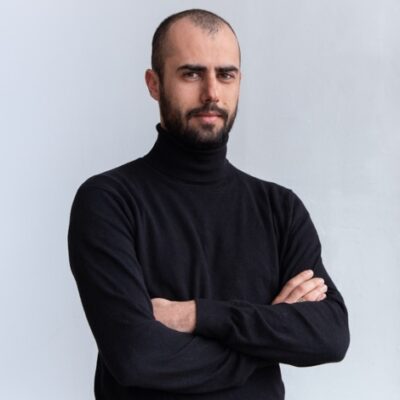
Who is hiding behind “the brand” Ésèpe?
I think it is Ésèpe who hides behind me! I discovered this imaginary character in 1992, who owes his name to a mythical river mentioned by Homer and Borges. I live with him as a novelist lives with a central character in his books. I give him life through texts and images, but he also does what he wants! And that is what interests me. To summarize my work on this theme, I would say that my entire production of texts and images is a reconstitution of lost memories (under the pretext of the fire at the Château de Lunéville in 2003) that are recalled, rediscovered, reinvented and rewritten by Ésèpe - and thus by me, his current “incarnation”. In terms of artistic categories: this is a plastic and literary production fully integrated into a concept of conceptual art. But when I hear myself say that, it makes me want to run away. I don’t mind.
You started the Ésèpe project when you were studying at the Nancy School of Art and Design 25 years ago. What has fundamentally changed since then in your approach to creativity, education and your most innovative techniques?
I don’t think anything has fundamentally changed. But when I say fundamentally, I am referring exclusively to the human, psychological dimension: to be creative, or a teacher, is to learn to know yourself in your relationship with the world, to be able to transform “it” in the medium of your art, or of your teaching. This dimension is timeless, let’s say on the scale of a few centuries….
But, of course, what has changed a lot in 30 years is the context of our mentalities, as well as the techniques of which our tools are made, and in particular their speed, which has even become a problem. As much as I enthusiastically use these new techniques, I have noticed that they constantly try to make us forget to keep our feet on the ground. This is undoubtedly due to two main reasons: they can no longer separate themselves from their own commerce and they are, so to speak, bewitched by a cult of their own acceleration. It is like a huge snake devouring its own tail.
Back to our favorite playground, the citizens’ assemblies, we have observed that the configuration of such spaces of participation is often modeled on spaces of political representation, such as the national assembly. How can scenography help us to reimagine these political spaces of citizen intervention, so that they are not mere reflections of institutional spaces? It is a very good question, because we have to ask ourselves the following question: How can we reimagine these political spaces of citizen intervention, so that they are not mere reflections of institutional spaces?
It is a very good question, because everything is possible! In scenography we know exactly how to give each space its own character and, above all, what kind of play to develop in it. I have never staged a citizens’ assembly, but I suppose there are some important things, in which the space has a lot of influence: welcoming the participants, building trust, allowing communication between equals. And you shouldn’t overdo it with the scenography either. But all this does not limit the possible creativity, quite the contrary. I think spontaneously of the kind of space that is used for parties: people like to get together to celebrate something. And isn’t a citizens’ assembly in itself always a celebration of democracy? I’m not talking about celebrating a party, but about sharing the joy of being active together. A good program, isn’t it?
What role will AI play in the development of exhibitions and the scenography sector in both commercial and civic spaces in the city in the next five years?
I don’t know yet, and I don’t have a crystal ball! In any case, things are moving very fast. What is already happening, of course, is the amazing production of spectacular images in a few moments with a few words. In professional practice, it still takes quite a few hours to get the right result, the right illustration for the project you want to show, before you actually do it. I think this will be the case in this field as in all: the production of “standard” things, i.e. things that we see everywhere and that are only slightly modified in their reproduction and multiplication, will be increasingly solved by artificial intelligence. A nice bakery, for example.
Conversely, scenography, also called design experience in space, will continue to spread to more and more domains (I’m thinking of learning spaces, new care spaces, death spaces, etc.): artificial intelligence does not yet know how to produce what has not yet been thought of. If not by a rather interesting combinatorial chance!
How do you think people who are not very active or interested in democracy can be mobilized through design or art?
If art and design can influence this, it will be by having captivated these audiences with the means proper to art and design: emotional, functional, etc. Then by showing them, on reflection, a bit like Monsieur Jourdain discovering something new. Then by showing them, on reflection, a bit like Monsieur Jourdain discovering prose, that they are part of a whole (social, political) that needs them. But to provoke this reflection, this discovery in a disinterested public, you have to pedal quite a bit…. I am afraid that crises are no longer effective; it is sad, and so human….
“The universe is made of stories, not atoms”. You quote this sentence by Muriel Rukeyser on your website.
What universe and what stories lie behind your “Ephemeris” series on Instagram, from which we have extracted several illustrations in this edition of our “Wilder Journal? “
The skeletons are a recent chapter of my free creative work, which I’m having a lot of fun with. As I explained at the beginning, it is Ésèpe who is behind it all. And since Ésèpe is, after all, a narrative that tends to come true, I really like this quote from Rukeyser.
At the ‘permanent origin’ of all my independent creative work, there is this fascination for the proximity felt by artists and authors of all times through their work. You read Cicero and it’s there, inside you. You look at a painting by William Turner and the painter is there, present, exactly where you are, contemplating the painting. It’s amazing what art can do. So I try to approach this feeling, all the time, every moment, every time.
Can you describe and title the series of stickers you have made for us?
Well, they’re emoticons that have been infected by a macabre dance…. I hope they’re fun. But that probably depends on your mood. A title: Emotideath Dance.


